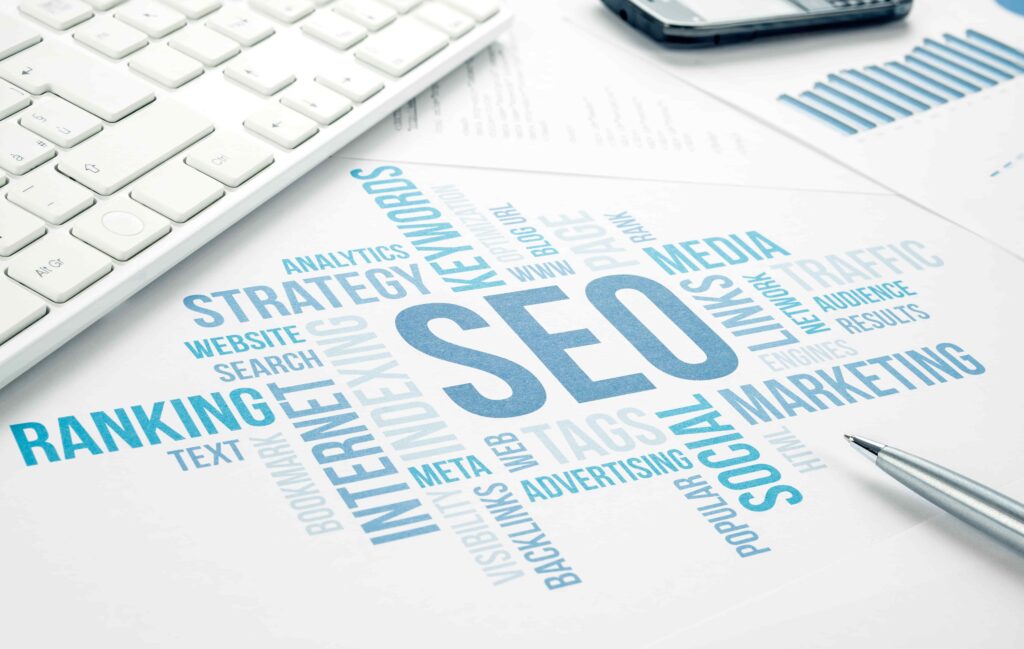Introduction: Unleashing the Power of On-Page SEO
In the vast digital landscape, where visibility is key, mastering the art of on-page SEO optimization is essential for businesses seeking online success. On-page SEO involves optimizing various elements on your website to improve its search engine visibility and attract organic traffic. In this comprehensive blog post, we will explore the world of on-page SEO optimization, uncover its benefits, and provide you with actionable strategies to elevate your website’s performance.

The Pillars of On-Page SEO Optimization
Quality Content
Content lies at the heart of on-page SEO optimization. Creating high-quality, valuable, and relevant content not only engages your audience but also signals search engines that your website is authoritative and trustworthy. Incorporate relevant keywords naturally within your content while maintaining readability and ensuring it provides a solution or valuable insights to your target audience.
Title Tags and Meta Descriptions
Title tags and meta descriptions are crucial on-page SEO elements. The title tag appears as the clickable headline in search engine results, while the meta description provides a brief summary of the page’s content. Optimize your title tags and meta descriptions with targeted keywords, compelling language, and a clear call to action to entice users to click through to your website.
URL Structure
A well-structured URL not only improves user experience but also contributes to better search engine rankings. Keep your URLs concise, descriptive, and keyword-rich. Avoid using numbers or complex characters, instead opting for readable words that reflect the page’s content. For example, “www.yourwebsite.com/on-page-seo-optimization” is more informative than “www.yourwebsite.com/page?id=1234”.
Heading Tags
Heading tags (H1, H2, H3, etc.) organize your content and provide structure for both users and search engines. The H1 tag represents the main heading of the page, while subsequent headings should be used hierarchically. Incorporate relevant keywords naturally within your headings to signal the content’s relevance and hierarchy.
Image Optimization
Images play a vital role in enhancing user engagement and conveying information. Optimize your images by compressing their file size to improve page loading speed. Use descriptive filenames and alt tags that include relevant keywords to help search engines understand the context and content of the images.
Internal and External Linking
Internal and external links are powerful tools for on-page SEO optimization. Internal links connect different pages within your website, improving site structure and enabling visitors to navigate easily. Include relevant anchor text and link to authoritative pages within your website. External links to reputable sources add credibility to your content and signal to search engines that your website is a valuable resource.
User Experience and Mobile-Friendliness
User experience is a critical factor in on-page SEO optimization. Ensure your website is responsive and mobile-friendly, as an increasing number of users access the internet through mobile devices. Improve page loading speed, prioritize readability, and provide a seamless navigation experience to enhance user satisfaction and encourage longer visits.

Best Practices for On-Page SEO Optimization
Conducting Keyword Research
Keyword research forms the foundation of on-page SEO optimization. Identify relevant keywords and phrases that align with your content and target audience’s search intent. Utilize keyword research tools such as Google Keyword Planner, SEMrush, or Ahrefs to uncover valuable insights, search volumes, and competition levels.
Implementing Schema Markup
Schema markup is a structured data markup language that provides search engines with additional context about your content. By implementing schema markup, you enhance your website’s visibility in search engine results, increase click-through rates, and improve the chances of appearing in featured snippets or rich results.
Optimizing Page Load Speed
Page loading speed is a crucial factor in both user experience and search engine rankings. Compress images, minimize code, leverage browser caching, and choose reliable hosting to ensure fast loading times. Regularly monitor and optimize your website’s performance to provide a seamless browsing experience.
Monitoring and Analyzing Performance
Stay informed about your website’s performance through analytics tools like Google Analytics. Monitor key metrics such as organic traffic, bounce rate, and conversions. Analyze the data to identify areas for improvement, uncover content gaps, and refine your on-page SEO optimization strategies.
Conclusion: Harnessing the Power of On-Page SEO Optimization
On-page SEO optimization is a fundamental aspect of your website’s success in the digital landscape. By implementing these strategies, you can maximize your website’s potential, improve search engine rankings, and attract relevant organic traffic. Remember to prioritize high-quality content, optimize your titles, headings, URLs, and images, and provide an exceptional user experience. Embrace the power of on-page SEO optimization and propel your website to new heights of visibility and success.
